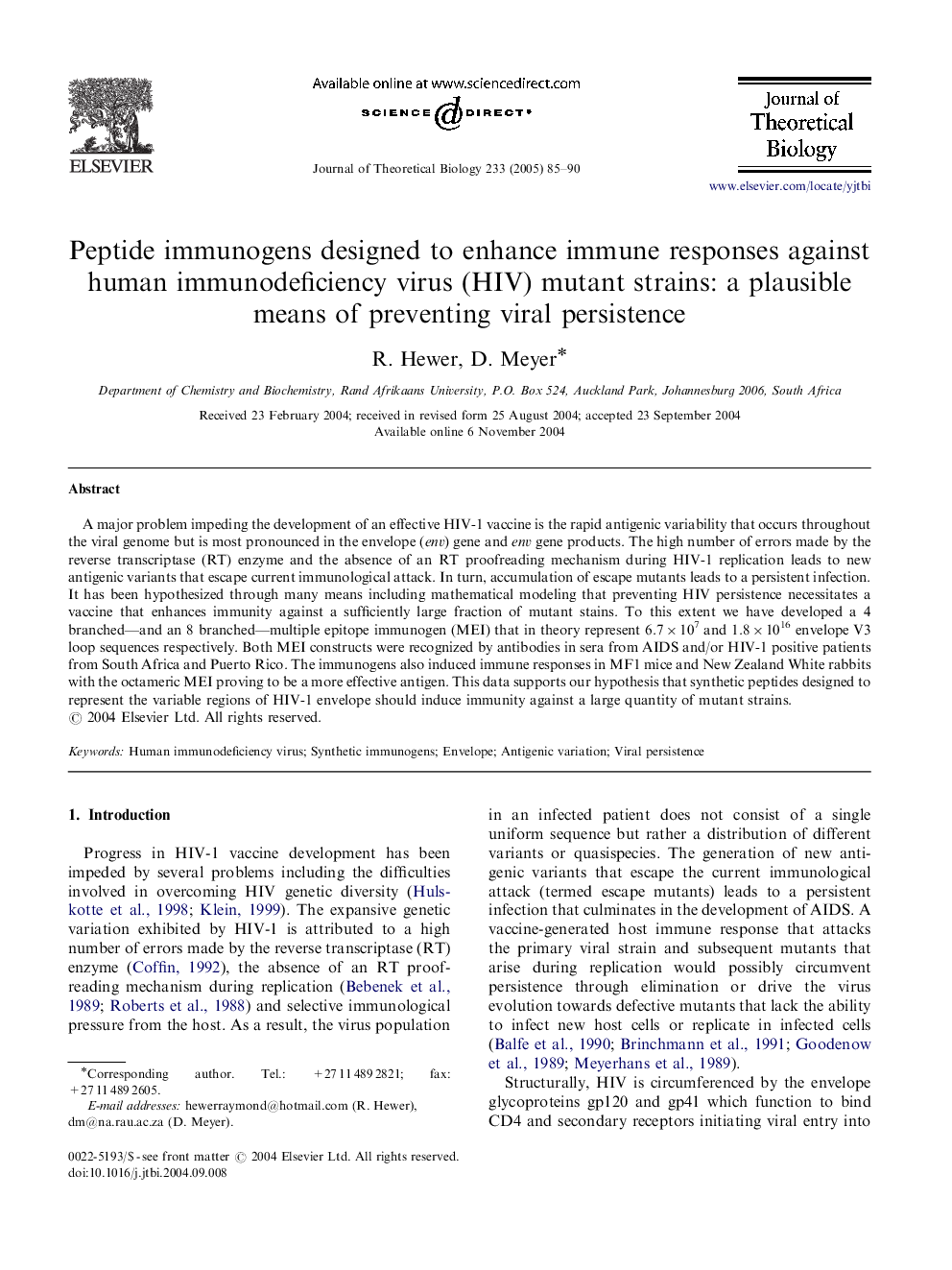| کد مقاله | کد نشریه | سال انتشار | مقاله انگلیسی | نسخه تمام متن |
|---|---|---|---|---|
| 9469841 | 1319067 | 2005 | 6 صفحه PDF | دانلود رایگان |
عنوان انگلیسی مقاله ISI
Peptide immunogens designed to enhance immune responses against human immunodeficiency virus (HIV) mutant strains: a plausible means of preventing viral persistence
دانلود مقاله + سفارش ترجمه
دانلود مقاله ISI انگلیسی
رایگان برای ایرانیان
کلمات کلیدی
موضوعات مرتبط
علوم زیستی و بیوفناوری
علوم کشاورزی و بیولوژیک
علوم کشاورزی و بیولوژیک (عمومی)
پیش نمایش صفحه اول مقاله

چکیده انگلیسی
A major problem impeding the development of an effective HIV-1 vaccine is the rapid antigenic variability that occurs throughout the viral genome but is most pronounced in the envelope (env) gene and env gene products. The high number of errors made by the reverse transcriptase (RT) enzyme and the absence of an RT proofreading mechanism during HIV-1 replication leads to new antigenic variants that escape current immunological attack. In turn, accumulation of escape mutants leads to a persistent infection. It has been hypothesized through many means including mathematical modeling that preventing HIV persistence necessitates a vaccine that enhances immunity against a sufficiently large fraction of mutant stains. To this extent we have developed a 4 branched-and an 8 branched-multiple epitope immunogen (MEI) that in theory represent 6.7Ã107 and 1.8Ã1016 envelope V3 loop sequences respectively. Both MEI constructs were recognized by antibodies in sera from AIDS and/or HIV-1 positive patients from South Africa and Puerto Rico. The immunogens also induced immune responses in MF1 mice and New Zealand White rabbits with the octameric MEI proving to be a more effective antigen. This data supports our hypothesis that synthetic peptides designed to represent the variable regions of HIV-1 envelope should induce immunity against a large quantity of mutant strains.
ناشر
Database: Elsevier - ScienceDirect (ساینس دایرکت)
Journal: Journal of Theoretical Biology - Volume 233, Issue 1, 7 March 2005, Pages 85-90
Journal: Journal of Theoretical Biology - Volume 233, Issue 1, 7 March 2005, Pages 85-90
نویسندگان
R. Hewer, D. Meyer,